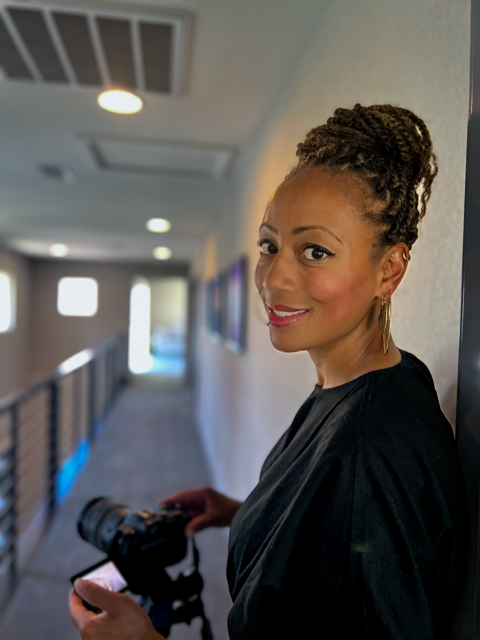Capturing the Essence: Best Practices for Exceptional Real Estate Photography
In the ever-evolving world of real estate, where first impressions can make or break a deal, the significance of high-quality photography cannot be overstated. A well-executed real estate photograph has the power to convey the essence of a property, evoke emotion, and compel potential buyers to take the next step. In this short lesson, we delve into the art and science of real estate photography, exploring best practices that elevate property visuals from mundane to magnificent.
1. The Importance of Professional Real Estate Photography: In an era characterized by visual literacy and digital engagement, professional real estate photography has become a non-negotiable element in marketing a property. It goes beyond mere documentation; it tells a visual story that resonates with potential buyers and enables them to envision themselves in the space.
2. Preparing the Property for a Photoshoot: Before the camera clicks, meticulous preparation is key to showcasing a property at its best:
2.1 Clean and Declutter: A clutter-free and well-organized space is visually appealing and allows potential buyers to focus on the property’s features. Clear countertops, tidy bedrooms, and unobstructed views contribute to a polished presentation.
2.2 Staging for Impact: Strategic staging enhances a property’s aesthetic appeal and helps buyers envision the potential of each room. Thoughtful placement of furniture, decor, and accessories can create a sense of warmth and livability.
2.3 Maximize Natural Light: Ample natural light lends a sense of spaciousness and vibrancy to photographs. Open curtains, blinds, and windows to allow sunlight to flood the space. Shoot during the golden hours of dawn or dusk to achieve soft, flattering lighting.
3. Essential Equipment for Real Estate Photography: Investing in the right tools is crucial for producing high-quality real estate photographs:
3.1 Quality Camera and Lens: A digital single-lens reflex (DSLR) camera with a wide-angle lens is a staple in real estate photography. Wide-angle lenses capture more of the room’s dimensions, providing a comprehensive view.
3.2 Tripod: A stable tripod eliminates camera shake, ensuring sharp and clear images, especially in low-light conditions or for long exposure shots.
3.3 Additional Lighting: In some cases, supplemental lighting equipment, such as speedlights or softboxes, may be necessary to balance out challenging lighting situations.
4. Mastering Composition and Framing: The principles of composition play a pivotal role in real estate photography, guiding the viewer’s eye and creating a harmonious visual experience:
4.1 Rule of Thirds: Divide the frame into a grid of nine equal segments, and position key elements along the intersecting lines or at their intersections. This technique adds balance and interest to the photograph.
4.2 Leading Lines: Utilize architectural features, such as hallways or staircases, as leading lines that draw the viewer’s gaze into the frame, highlighting the property’s design and layout.
4.3 Symmetry and Balance: Symmetrical compositions create a sense of harmony and order. Centering elements or mirroring them across the frame can evoke a feeling of stability.
5. Post-Processing and Editing: Post-processing is the final touch that transforms raw images into polished masterpieces:
5.1 Color Correction: Adjust color balance to ensure accurate representation of hues and tones. Correct white balance to eliminate unwanted color casts.
5.2 Exposure and Contrast: Fine-tune exposure and contrast to balance highlights and shadows, revealing details across the entire image.
5.3 Perspective Correction: Utilize software tools to correct perspective distortion caused by wide-angle lenses, ensuring vertical lines remain straight.
5.4 Retouching and Enhancement: Refine details, remove distractions, and enhance visual appeal through retouching. This may include cropping, eliminating minor blemishes, and improving overall clarity.
6. Showcasing Exterior Spaces: The exterior of a property is equally important as its interior. Photographing outdoor spaces requires attention to detail and a keen eye for aesthetics:
6.1 Curb Appeal: Capture the property from the curb to highlight its overall appearance and street presence. Clear walkways, neatly trimmed landscaping, and a well-maintained facade contribute to inviting curb appeal.
6.2 Golden Hour Magic: Photograph exteriors during the golden hours of sunrise or sunset for warm, soft lighting that accentuates architectural features and creates an inviting atmosphere.
6.3 Highlight Outdoor Features: Showcase outdoor amenities such as patios, decks, gardens, and pools to emphasize the property’s potential for outdoor living and entertaining.
7. Aerial Photography and Drones: Aerial photography provides a captivating perspective that showcases the property’s entire layout and surroundings:
7.1 Drones and Aerial Imaging: Utilize drones equipped with cameras to capture stunning aerial shots that emphasize the property’s location, proximity to amenities, and stunning views.
7.2 Compliance and Safety: Adhere to local regulations and guidelines governing drone usage, ensuring safety and respect for privacy.
8. Building an Effective Real Estate Photography Portfolio: A compelling portfolio is essential for attracting clients and showcasing your skills:
8.1 Diverse Range of Properties: Include images of various property types, sizes, and styles to demonstrate your versatility and ability to capture each property’s unique character.
8.2 Showcasing Before and After: Incorporate before-and-after shots to illustrate the transformative impact of professional real estate photography.
8.3 Consistency in Style: Maintain a consistent style throughout your portfolio to establish a recognizable brand and attract clients.

